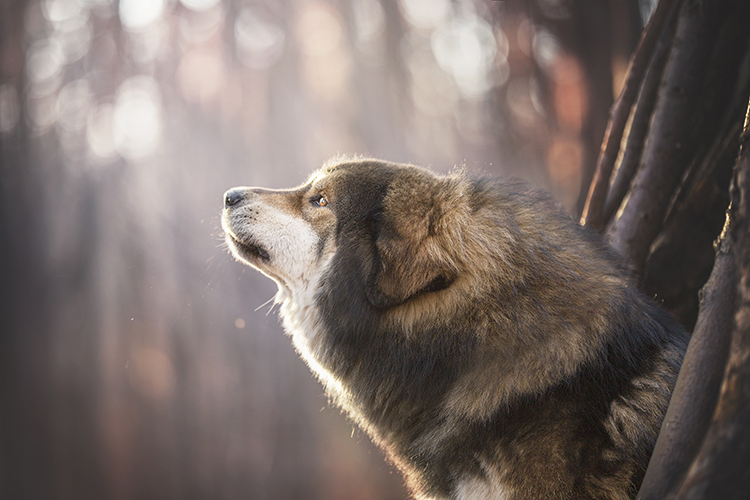The Tibetan
mastiff - From fierce guardian to family dog

Written by: Judith Vrugt and Sanna Sander
Special thanks to Ashish Moktan, Giovanni Boffano and Susan Smith for answering questions and sharing
their experiences with native Tibetan mastiffs.
Preface
From the moment the Tibetan mastiff entered the West,
changes occured within the breed.
Breeders and western society affected the path of
their development. For example, other breeds have been included and the gene
pool was narrow due to very few foundation animals. The Tibetan mastiff was
made to adapt to the western way of life through behaviour
and temperament. As their temperament started to change, so did their
phenotype.
Today fanciers of the breed love to point out that the
breed was once a fierce and serious guardian, but the modern version does not
always show that character anymore, nor is it wanted. The aim of this article
is to shed a light on these changes and on the emergence of a romanticized
picture of the Tibetan mastiff.
The
Tibetan mastiff in their country of origin
The Tibetan mastiff, or Do-khyi as the breed is also known as, has lived with the
nomadic people of Tibet and the Himalayan mountains for at least a couple of millenia. The conditions in these areas are tough, the
dogs’ character has been shaped by their surroundings and their task as a
fierce protector. The job requires certain characteristics to make them
suitable for said task. They have to be aggressive, independent, fearless,
alert and above all, they need to be ready to act upon any form of
danger or perceived threat quickly. If not, their life could very well be in
danger. The native population is spread across a vast area, which has resulted
in adaptation to different environments and the local cultures. Therefore a big variation in type exists; ranging from a
smaller and lighter structure to a more solid structure. The coat can vary from
short all over to a longer coat with impressive mane. There’s also great
diversity in shades of colours: black and tan,
brindle, ticking, piebald, sable, gold, red, black, with white collar, dilute,
and the list goes on. They even exist with unilateral or bilateral blue eyes.
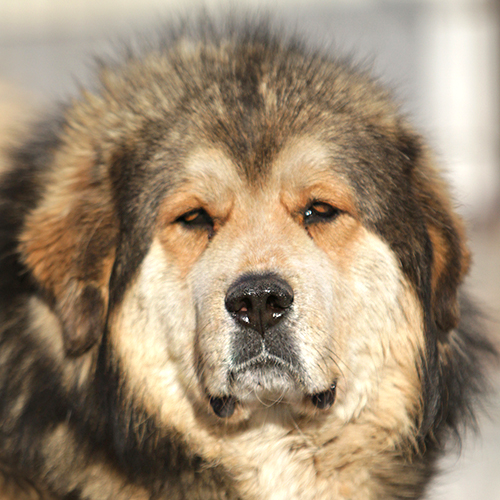

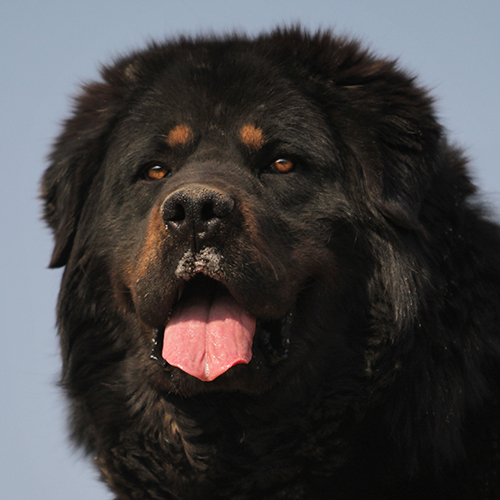
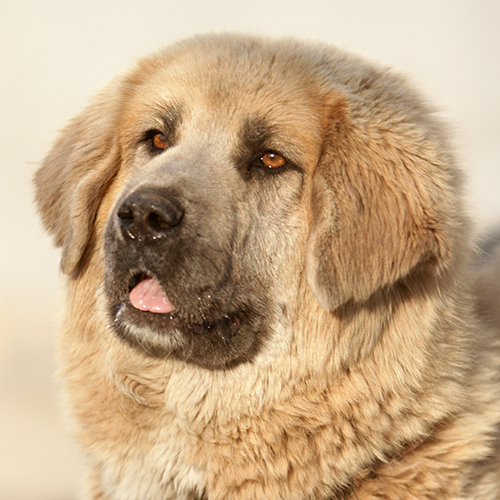
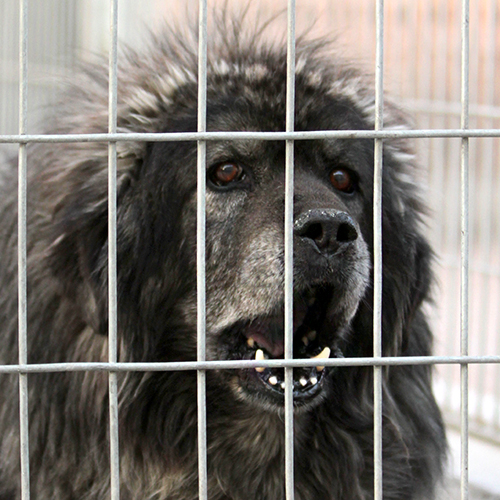
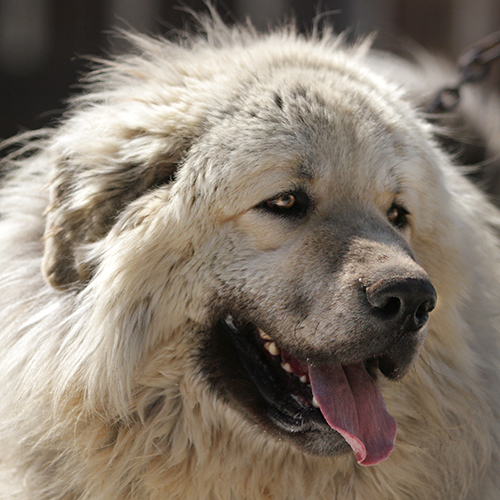
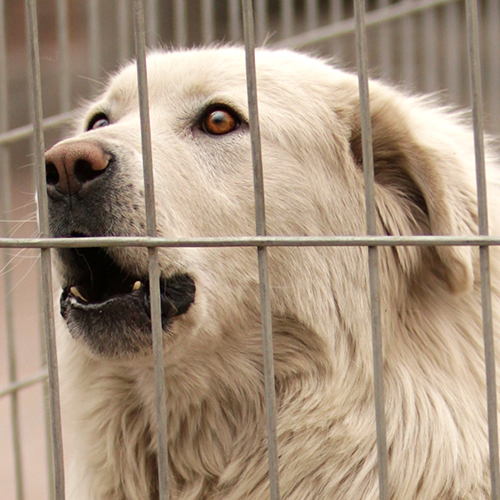
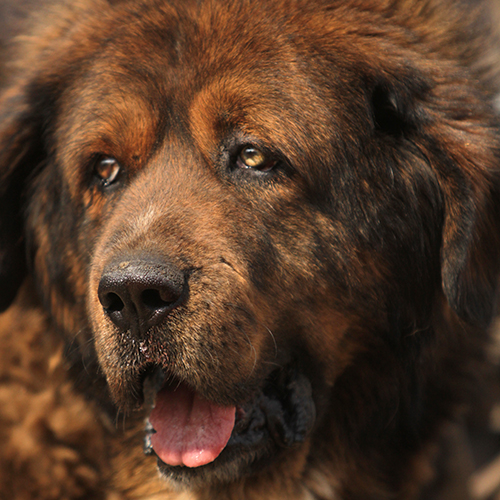
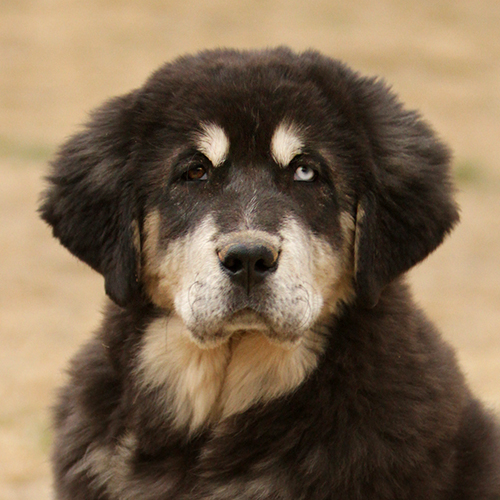
A lot of native Tibetan mastiffs spend most of their lives at the end of a
chain in the proximity of their people and their tents and belongings. They are
also used as protectors of herds, but should not be
confused with shepherd dogs. Those who live chained often have the toughest
temperaments. They only get food and are not petted or played around. They
follow this life till their death and it makes them
extremely aggressive and less stable. Tibetan mastiffs who work as livestock
guardians are very aggressive towards other animals and most are aggressive to
people as well. However, their temperament and reactivity differ. Some
bloodlines are tougher than others. Also the
preferences of the local people can affect the fierceness in character. There
are dogs who are aggressive to anything and anyone, some are only aggressive on
their own territory and are easier to approach once they are away from the
place they have to protect and others only show aggression
towards predators and other dogs. Fearful temperaments also exist within the
native population. This can be caused by bad experiences with animals or
humans, but it can definitely be an inherited trait as well. When they have to
work on a chain, it doesn’t really matter if their aggression comes from fear
or confidence. Either way, they exhibit the same behaviour
when chained. As long as they do their job, they are useful. However, this
temperament is not appreciated by everyone and not useful in every
circumstance. They have to confront the threat when needed, and these dogs are
more likely to run away when they have their freedom. However, a too confident
Tibetan mastiff could also be problematic in certain situations, as they are
more likely to get killed by predators. It can be a hard task to select the
right specimens from the native population if you are looking for one that
would fit into the western world.

Moving
to the west
The first imports
In the early 1800 the first Tibetan mastiffs were exported
to England from Tibet, but back at that time there was no standard. Later on,
more dogs got exported from Nepal and India as well. The modern standard was
written in the 20th century, which was based on the Nepalese imports. The
beginning of the population of the western Tibetan mastiff all started with a
bottleneck. This term illustrates a small number of animals, which serves as
the foundation for a large population over time, resulting in inbreeding.
Around that same time Beisler’s Kachook,
a Central-Asian shepherd, was used as a stud for the population in America
(1976). He only produced two litters in 1976, and two of his offspring were
used for further breeding. After only three generations there were 336 dogs
registered in The Breed Archive of the Tibetan mastiff who are descended from Beisler’s Kachook. As this
happened in the first stages of a bottleneck, Kachook
appears repeatedly in many bloodlines of the modern Tibetan mastiff. Although
it has never been registered, the change in phenotype can be explained by more
crossbreeding with other breeds. This affected the western bloodlines even
more. Typical traits got replaced with less typical features: they got a
steeper stop, their coat structure changed, their body structure changed, they got
bigger and heavier, etc. Although some would argue that certain traits would
change by time anyway as a result of export, as we live in very contrasting
environments with different climates. Due to the bottleneck, this selection of
traits, in combination with the limited number of imports and the small gene
pools, led (and still leads) to a higher coefficient of inbreeding within the
western lines.
Chinese market type
Around the year 2000, the breed took an extreme turn. The Tibetan mastiff
gained interest in China and suddenly it was very fashionable to own and
display these dogs. The Tibetan mastiff became a symbol of status and wealth,
initiating a rise in both pure and impure litters being bred. They drew the
attention of successful businessmen and it was not uncommon that the Chinese
kept entire kennels of these dogs. The demand pushed the prices up and as the
news about the most expensive dog breed
in the world traveled all around the globe, it only fueled the already busy
industry that was growing in China. Commercial breeders emerged everywhere to
saturate the demand and their main objective was to breed dogs to sell for top
dollars. To accomplish this, they started to create a type of dog with more
extreme traits. They needed to have more skin, a huge amount of coat, a bigger
head and had to be big-boned, all to make them look
bigger. They began to crossbreed the Tibetan mastiff with any breed they could
find for that one goal. A few examples of the breeds being used were the shar pei, chow chow, Korean mastiff,
Newfoundland, bloodhound, Neapolitan mastiff and the Saint Bernard. The bigger
they looked, the more money they could potentially bring. As the extreme traits
made the money, their temperament and health were forgotten by the breeders.
This resulted in unpredictable behaviour, extreme
inbreeding and health problems. Hip dysplasia, elbow dysplasia, brachycephaly
and eye conditions like ectropion and entropion are very common. Also, their
coat structure changed for the worse, which is difficult to take care of.
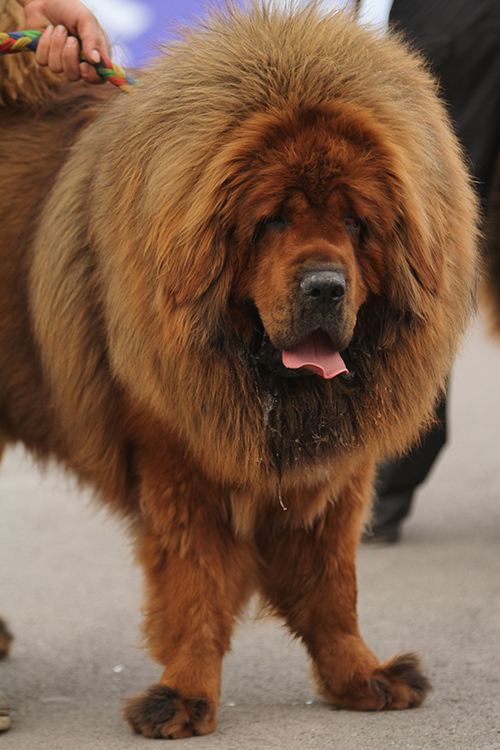
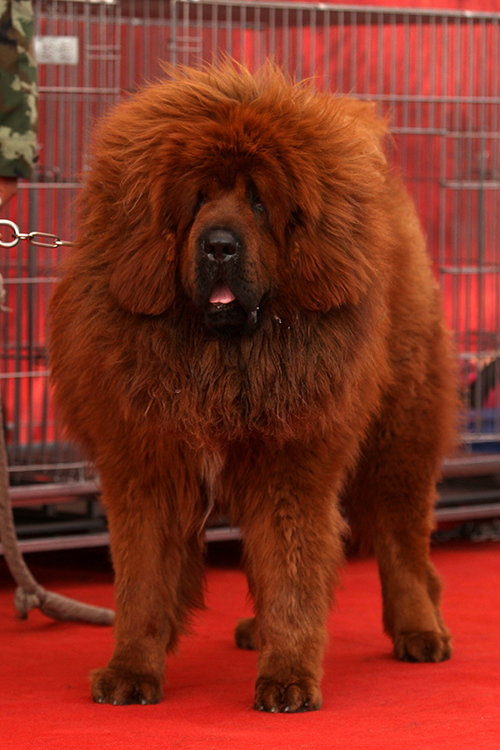
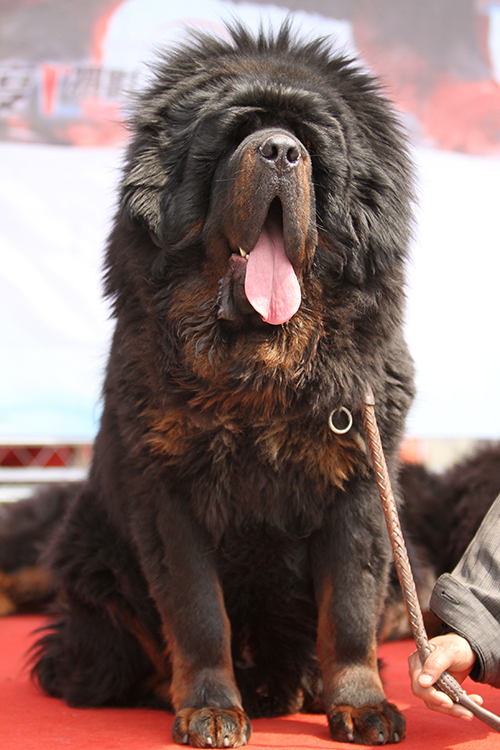
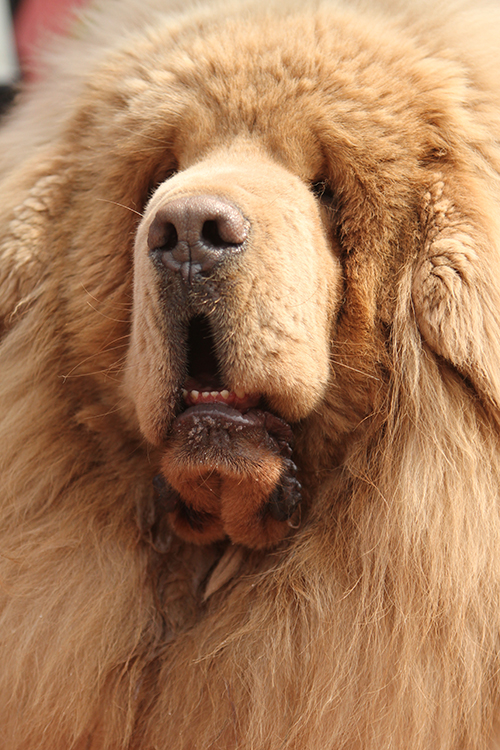
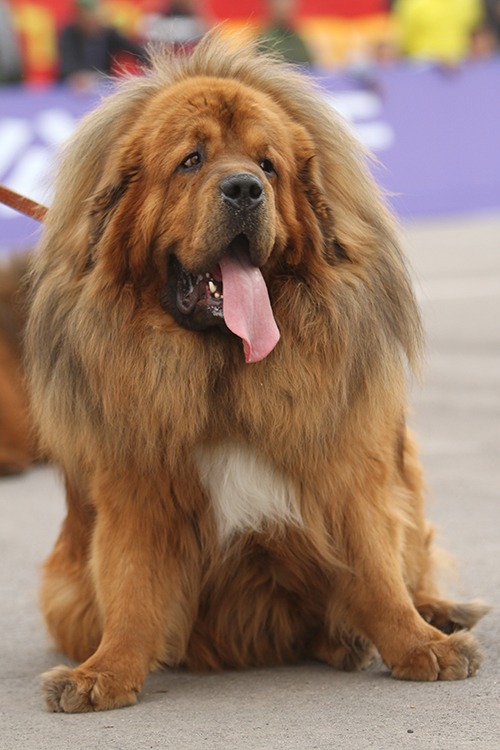
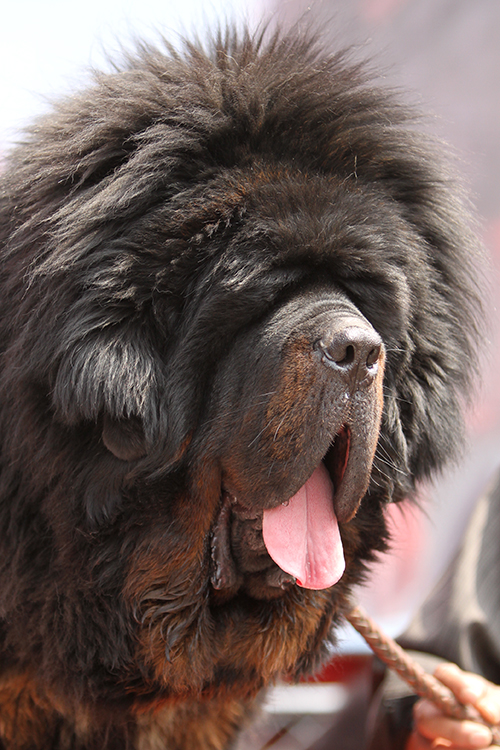
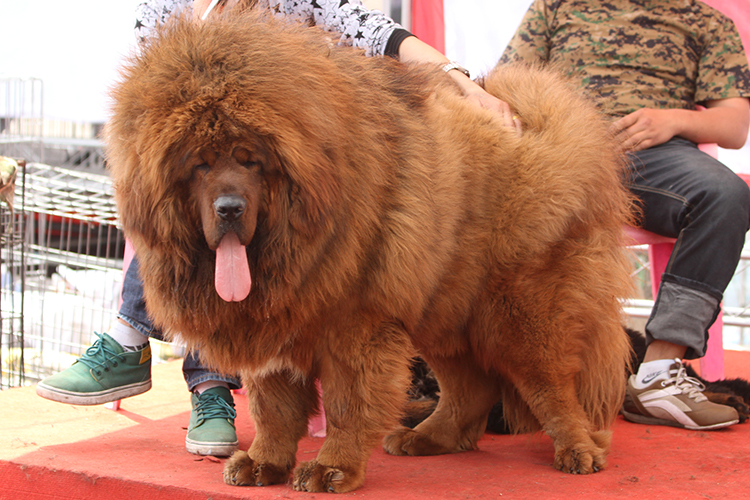
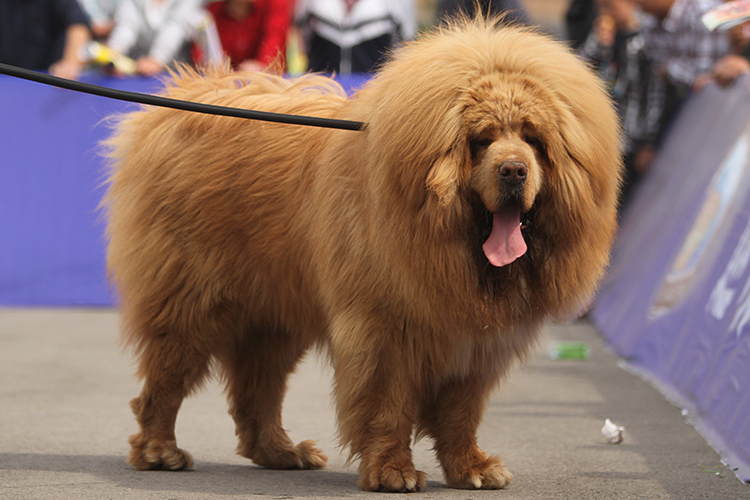
Photos: Sanna Sander www.sannasdd.com
FCI
pedigrees were acquired for these newly made mastiffs and suddenly the “rare
and pure Chinese bloodline Tibetan mastiffs” could be bought and used as studs,
creating offspring sporting FCI pedigrees stating
they were actual Tibetan mastiffs, in spite of their motley background. New
blood has always been coveted in the West and more than a few breeders imported
Chinese mastiffs and incorporated them in their breeding programs.
People in China have paid a high price for them, until the craze ended after
multiple incidents and less people got interested. Many kennels were forced to
shut down. These Chinese mastiffs were abandoned and are now even getting sold
for their meat. Over time, they got known as “pig-mastiffs” in China. As they
affected so many bloodlines of Tibetan mastiffs, the pure population of the
breed shrunk even more. Due to this crossbreeding and the selection of such
extreme traits, it became harder to find bloodlines which weren’t affected.
Genetics
Unfortunately, when the standard was written in 1931
by Mrs. Bailey and associates, there was not much known about the huge
diversity and features of this landrace. So when they
set up the breed standard, it was solely based on a small population and thus
causing the standard to be very limited. This can also lead to a smaller gene
pool, as useful genes get disqualified at dog shows and ignored for breeding
programs, because they are not desired within the breed standard. For example, most colours that are now seen as faulty in the West, are
actually commonly seen in native specimens of the breed.
These changes in structure can also be caused by the
selection for different temperaments, as sometimes there’s a link between
character and appearance. When you change their temperament, theoretically you
can change their structure as well. This phenomenon has been widely represented
by Dmitry Belyayev’s breeding experiments with foxes,
which have demonstrated the selection for tameness to go hand in hand with
physical changes. The most recent and plausible hypothesis explaining this, is
the underlying selection for neural crest deficits, which can lead to changes
within the whole animal. Some of these changes are thought to be smaller
adrenal glands, altering the animal’s susceptibility to fear or aggression.
Another explanation, one that again could be applicable to the Tibetan Mastiff
breed, is genetic linkage. If one or more genes for either aggression or
tameness are close to a gene responsible for a physical attribute, it will be
less likely for these genes to be divided during recombination, which occurs
throughout meiosis. Thus, this would highly increase the chance of both
characteristics to be inherited or bred out together.
Romanticization
The native dogs are usually described as extremely aggressive. Aggressive dogs
like the ones we can find in Tibet are not suitable in social environments. For
this reason western breeders started selecting for
softer temperaments once those dogs were imported. The sharp edges were taken
off, which made the dogs become more open and easier to guide, making them more
suitable for a western way of living. Also, when looking at the requirements of
the FCI, a dog should be disqualified when it behaves
aggressively - “ ‘Disqualified’
must be awarded to a dog which does not correspond to the type required by the
breed standard; which shows a behaviour clearly not
in line with its standard or which behaves aggressively”. This is in
contradiction with the temperament this breed needs in its native lands. The
typical characteristics of the Tibetan mastiff had to change to fulfill these
wishes, so many were bred to be a non-aggressive guard- and family dog. In
extreme cases some specimens lost their drive completely.
Yet people created a romanticized picture of the
breed. Fanciers still talk about the fierce and fearless guardians of the past.
Today’s breeders and owners often promote their western Tibetan mastiffs as
“authentic”, “ancient” and “from old bloodlines”. However, this does create a wrong
image of the original dogs from the high altitudes. The western requirements do
not meet the native standards. Aggression, the will to attack immediately and
the fierce, fearless temperament has been reduced or even got lost for the
purpose of a family dog. So, although the dogs descend from the native Tibetan
mastiffs, it doesn’t necessarily mean they are authentic dogs from old
bloodlines. We, of course, want to believe it’s true and so we incline to
recall information in a way that confirms or supports our prior beliefs
(confirmation bias). An example from the author; “when I describe my native
dog’s temperament to people, they often take a few words out of the story and
link them to theirs, immediately claiming their Western Tibetan mastiff is very
similar to mine, while both dogs have a completely different mindset.” When
people join the world of the Tibetan mastiff (even those with a critical mind)
they often automatically accept the opinion and the point of view from others
who’ve been there longer. Once they take over those statements, cognitive
dissonance might occur when someone criticizes these statements. We’re starting
to believe false information, because the western vision gets repeated and
repeated, until it becomes reality (illusory truth-effect).
This mentality can be very problematic if the person
decides to buy a Tibetan mastiff from native origin. As these dogs are not
affected by the West in any way, they have maintained their original
temperament and purpose and so their drive to protect and defend is unaltered.
It remains raw and unyielding. This is the reason why it’s not possible to
approach and handle them like it would be with westernized Tibetan mastiffs.
These necessary characteristics are often interpreted as problematic and
incorrectly based on the western vision. As many people stick to the western
idea of what a Tibetan mastiff should be like, a native Tibetan mastiff is more
vulnurable to misunderstandings, which can easier
lead to rehoming or even euthanasia.
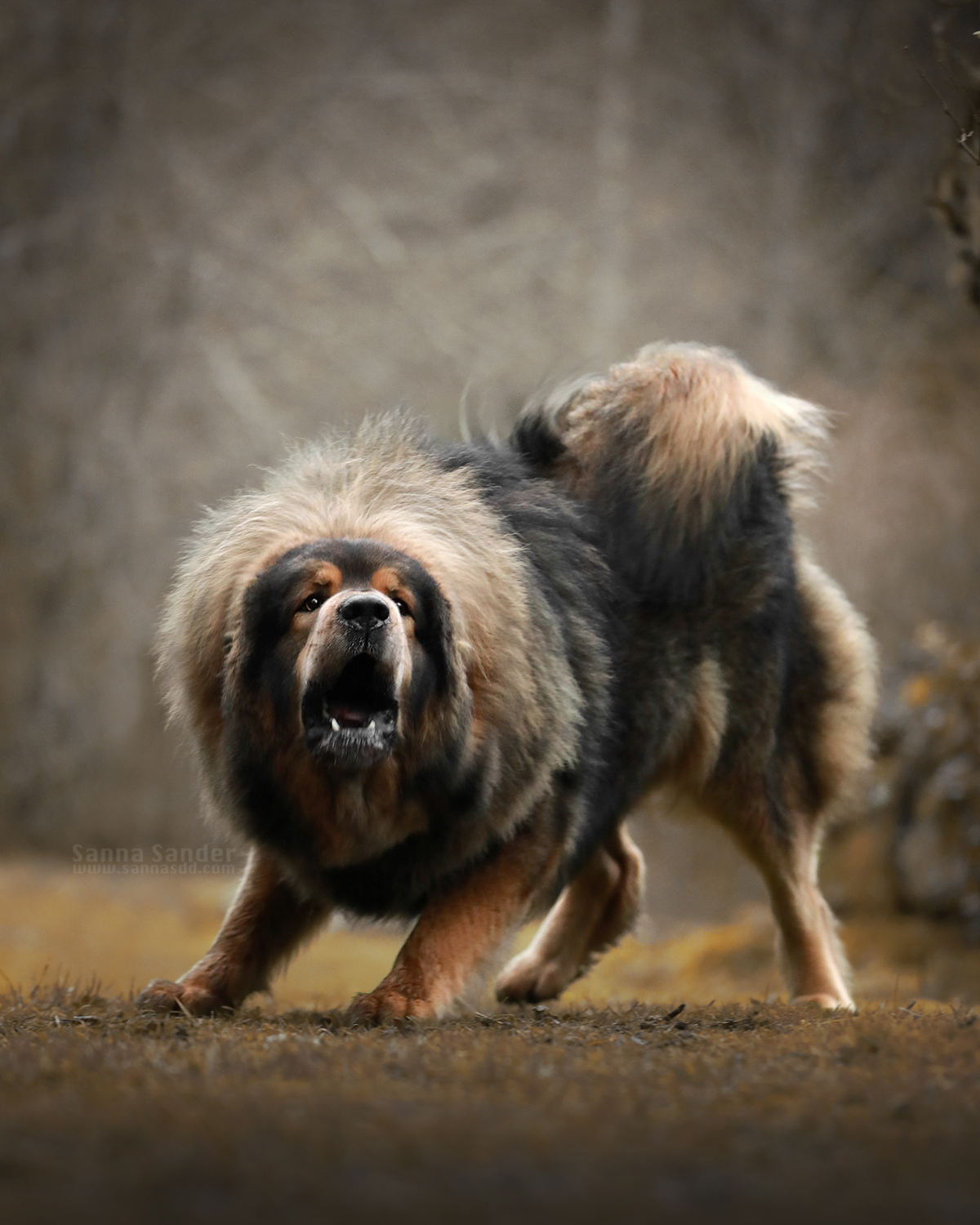
Discussion
and conclusion
Preface
In their native lands the Tibetan mastiff has adapted
to a tough lifestyle where they have to protect their ground and people, and
sometimes livestock, against large predators. There’s no time to think, they
need to act when the situation occurs. Because they have no remorse and are so
quick with responding, it does make them less suitable for a social western
lifestyle. It’s quite logical that
people decided to make changes in the temperament of the breed, so it can still
perform its job in a more risk free way. However, there is a big difference between just
taking off the sharp edges and completely reducing their instincts. In the
latter case, the breed changes into a whole different type of dog. It’s
important to realize that if we still act like these dogs are just the same as
their original ancestors, we lose the grip of reality.
Acceptation
One could argue that if you like the looks of a certain breed, but do not like
the way it behaves, it’s simply not the breed for you. It's not right to pick
that breed and form it into something completely different so it suits your
wishes more, while continuing to call it the same breed. Actually, the western
vision of the Tibetan mastiff is very similar to the standard of the leonberger. The leonberger looks
like a livestock guardian, but is created to function
as a family dog. Even though the leonberger has some
guarding traits, it will never be claimed as a livestock guardian. A livestock
guardian who is friendly and social can not function
as a livestock guardian and the same goes for most Tibetan mastiffs of the
western population. We should ask ourselves whether or not it’s fair to promote
western Tibetan mastiffs as if they are the same as their original ancestors,
while their changes made sure they can not function
like their ancestors can.
New native imports
Recently, new native specimens have been imported to the West. But when should
we stop calling their following generations, who are being born in western
kennels, “native”? For breeders it’s an attractive term to use, to promote the
offspring they produced with native dogs, referring to their pure and typical
type and bloodline. However, a line should be drawn between what we call
“native” and “western”, otherwise backyard breeders will use the term “native”
for their practises as well. We’ll also forget the
real meaning of a “native dog”. That is actually referring to those who have
been born in their native lands with the indigenous people who’re using these
dogs for their original jobs. Once offspring are born in a kennel outside their
native lands, it’s not really a “native” anymore. But their birthplace isn’t
the only determining factor when calling a dog “native”, because there are also
breeders in those areas who are mixing the dogs, or
are selecting for different traits in different ways. With every generation
bred by western breeders, the selection criteria differs
greatly in comparison to their native lands. There is no natural selection any
longer, crossbreeding happens and in addition, the climates and circumstances
might be completely different. To retain their typical traits, it’s necessary
to continuously use new, true native Tibetan mastiffs after a couple of
generations at most. If we call the following generations, who all have been
born in western kennels, “natives”, we can call pure western Tibetan mastiffs
“native” as well. But that is, of course, incorrect. After many generations of
adaptation to the western life, they lost the necessary traits to function in
their native lands. Eventually this will also happen with the bloodlines of the
new imports if no new native Tibetan mastiffs will be used along the way.
Future outlook
The dogs in their native countries are in danger and
are even close to extinction. The numbers are dropping due to a decrease of the
nomadic lifestyle. The amount of people, who’re living in the traditional way
and thereafter choose to switch to better jobs closer/in the city or abroad,
increases. Also, more security became available; roads are being built and the
need for these dogs is decreasing as a result. So, let’s imagine: what happens
when the nomadic lifestyle disappears and the native
dogs go extinct? We’re breeding a ghost of the once mighty, fierce beasts from
the high altitudes, yet we’re promoting them as the ancient dogs they once
were. If the native Tibetan mastiffs go extinct, is it fair to keep breeding
westernized dogs and then fully romanticize them as “real Tibetan mastiffs with
an ancient history”? Landraces are often considered as cultural heritage for
the local people. Therefore the importance of keeping
them in their original form is higher than with modern breeds. So, wouldn’t it
be more fair to remember the native dogs in their true
form and accept the fact we have a different type of Tibetan mastiff now? Once
the native Tibetan mastiff is extinct, the only thing left is their memory
within history- let’s keep our knowledge accurate.

